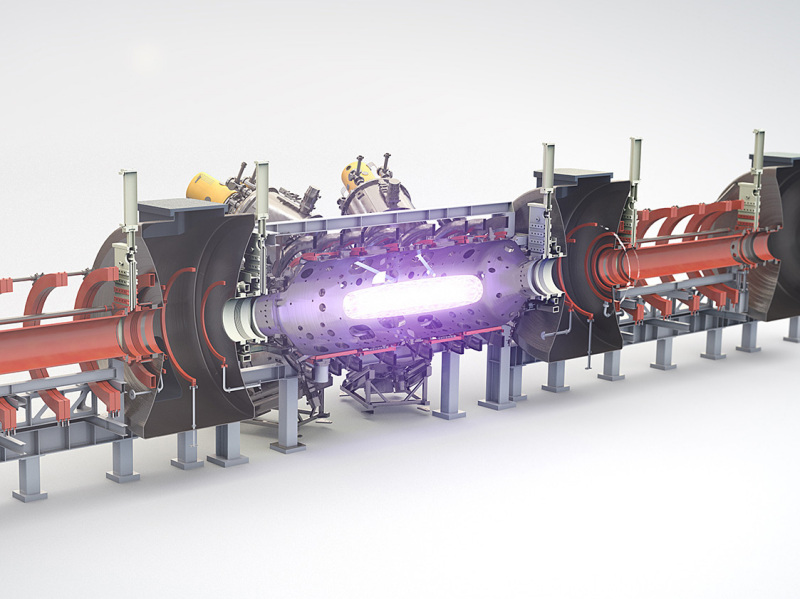
TAE Technologies' 5th generation 'Norman' reactor. Image: TAE Technologies
California fusion developer TAE Technologies has announced the first measurements of hydrogen-boron (p11B) fusion in a magnetically confined plasma.
The development, reported in collaboration with Japan’s National Institute for Fusion Science in the journal Nature Communications, gives impetus to the potential of p11B as a viable fuel for fusion energy.
p11B fusion is one of several approaches being pursued by developers and is considered by TAE Technologies as the cleanest, most abundant fusion fuel cycle on Earth.
Moreover, while the challenges of producing the fusion core are greater for p11B than for the deuterium-tritium approach, the engineering of the reactor should be far simpler.
The research report describes the outcome of the nuclear fusion reaction of p11B in an experiment in NIFS’ Large Helical Device, including the production of the conditions necessary for the reactions in the plasma and the development of a detector for measurements of the helium products.
“This experiment offers us a wealth of data to work with and shows that hydrogen-boron has a place in utility-scale fusion power,” says Michl Binderbauer, CEO of TAE Technologies.
“We know we can solve the physics challenge at hand and deliver a transformational new form of carbon-free energy to the world that relies on this non-radioactive, abundant fuel.”
TAE Technologies was founded in 1998 and has built five laboratory-scale devices and successfully generated and confined fusion plasma more than 140,000 times, the company says.
Its next generation machines currently under development are Copernicus, which is expected to demonstrate net energy around mid-decade, and Da Vinci, which should start delivering power to the grid in the early 2030s.
TAE Technologies has adopted a compact linear and modular design approach using an advanced accelerator beam-driven field-reversed configuration to sustain the plasma and which should be able to accommodate various fuel cycles, including p11B, deuterium-tritium and deuterium-helium-3.
The design also is expected to deliver a greater power output than other designs.
Among other developers of p11B nuclear fusion is the Australian startup HB11 Energy.